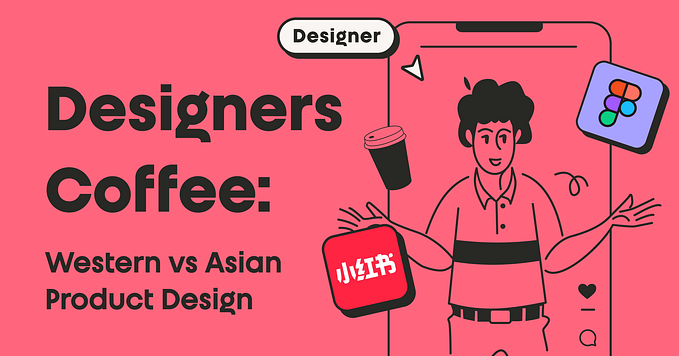Loves me, loves me not

I am sorry to say, Booking.com, but I am breaking up with you. You have mistreated me badly and I don’t want to see your sorry site any more.
Have you ever broke up with a mobile provider? Or a bank? Or technology? Do you remember what where the words you wanted to throw into their faces? To be totally and brutally honest? To get things off your chest?
Emotional attachment
We tend to develop emotional attachments to products, services and technologies and these relationships have the ups and downs of their own. So, it’s not that hard for us to express our emotions towards them in a heat of a moment. Both good and bad. But when it comes to user studies those emotions seem somewhat inappropriate to express. So, the users tell them not. Yet, understanding that emotional reaction is what makes it possible to distinguish a good product from a great one. Or a bad product from an average. It makes it possible to understand the emotional connection with the design. To improve it beyond functionality and usability.
Love and break up letters
For quite some time I’ve been looking for a method that would allow me to assess customers’ sentiment towards services and would let me do it both in qualitative and quantitative manner. One day I bumped into an article in an ACM magazine Interactions by E.M. Gerber from Northwestern University under the title “Tech breakups: a research method for understanding the technological attachment”. There was this fantastically simple and straightforward method described. Exactly what I was looking for.
It was created by an innovation consultancy Smart Design. The idea behind the method was as follows: instead of directly asking people what they like or don’t like about a particular product or service, they were asked to write a love or a break up letter to it based on real-life experiences and interactions. In some cases the letters were written, in some they were spoken. Northwestern University took it a step further and asked the users to enact the break up situation using role playing.
The article reported that such an exercise helped the participants to focus on the most meaningful situations in the relationship with the product from the initial stage to the moment of detachment. Users might have felt a little surprised by the data collection format but it was easy for them to understand it and complete the study.
Qualitative — quantitative research
I fell in love with this method straight away and started using it in a variety of studies and workshops (it makes a great warm up exercise). But at some point I asked myself: would it be possible to use this method to map user sentiment both in qualitative and quantitative manner?
So, we set up to run a big online study using the method for mobile providers in Poland. We asked ourselves two questions:
— is mobile technology transparent (like water in the tap) or is there a basis for emotional attachment towards a mobile provider?
— do people express a variety of emotions towards different telecom brands and how does it reflect their purchasing behaviour?
We recruited 599 users using an online panel to participate in the study. The results were astonishing. First of all, people definitely knew how to write such letters. Some of them were shorter, some longer but the amount of sentiment detected created a seriously good basis for understanding where mobile providers go right and where wrong. We combined it with the overall satisfaction measurement and the intention for leave the provider. Based on that we got a semantic map telling us what sort of vocabulary customers use if we are happy and which when they are unhappy with their provider.
Check it out:
“I can’t stand your deceitful advertising. You promise things you’re not able to deliver. You’re just a cheat. You take old and long-standing customers for nothing. I’ve wasted a huge amount of money thanks to you and I will never forgive you. I’ve never had trust in you, but this time you’ve overstepped the line. I can’t wait to see our contract expire. I’ll join the competitors with relish. One thing I regret is spending 20 years with you, wasted.”
“If it wasn’t for your services, I wouldn’t be able to call anyone. You’re the best and I would not replace you with anyone better. I joined you a long time ago, but still I have not enough of you. You have a really far-reaching coverage, thanks to which I can always get through easily to anyone I want. Your services are top quality, you don’t misuse your power and have offers for any budget. You go to great lengths to make everyone feel with you like at home. May it never change or, if ever change, it shall only change for the better.”
Pretty cool, heh?
The impact
This study gave us, for the first time ever, a chance to grasp the attention of the Management Board with respect to experience research. Although the results were in their core qualitative, the quantitative nature of data collection allowed us to compare them with the other research outcomes. Many were laughing that I came to the MB meeting with the linguistic lesson (as opposed to the typical math lesson) but the outcome was through its sheer quantity pretty convincing.
The results were even better received on the B and operational levels. People felt that they were given a good insight into the possible directions they should develop their areas of expertise. We went as far as to print the sets of letters for people to take with them and read some juicy samples later on.
Surprises
The biggest surprise was how quickly we managed to collect the data. We planned the study for one week. Two and a half days in we already had the entire sample collected. It seems that the customers want to share their emotional feedback, they just need the right means to do it.
Women were much better in expressing emotions comparing to men. This is maybe not that much of a surprise but it is, certainly, something to take into account when running such a study.
The amount of data gathered about every channel, every pain point was really great. We followed it up with some consecutive studies to dig deeper but we, for sure knew, where to dig.
We started with the idea of two types of letters: the love and the break up letter. However, the study showed us that a third category was necessary: a warning letter. Warning letters were letters written by customers who felt that things were on a downhill but not as bad as to break up just yet. They were the most informative ones with respect to the challenges the different providers were facing.
Would I do it again? For sure! I could even imagine having such a tool to collect data periodically, to have a thermometer of customer sentiment. Maybe more complicated to analyze on the face of it but for sure more informative than other metrics perpetuating the domain of Customer Experience these days.
__________________________________________________________________
Aga Szóstek, PhD is an experience designer with over 19 years of practice in both academic and business world. She is an author of “The Umami Strategy: stand out by mixing business with experience design”, a creator of tools supporting designers in the ideation process: Seed Cards and the co-host in the Catching The Next Wave podcast.











